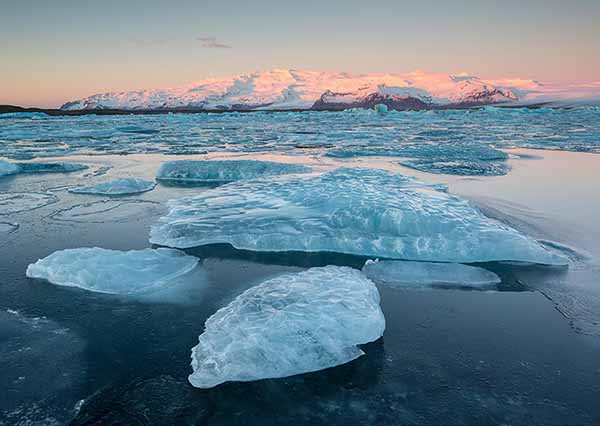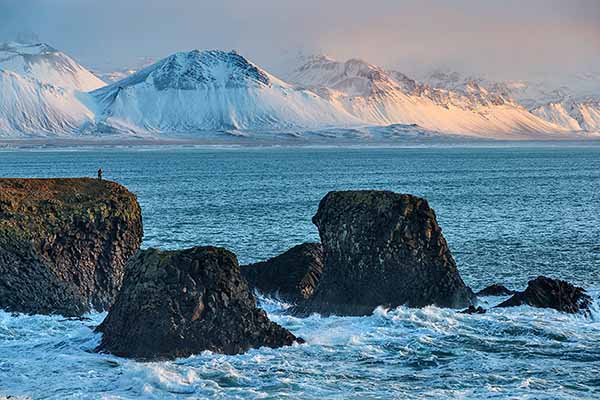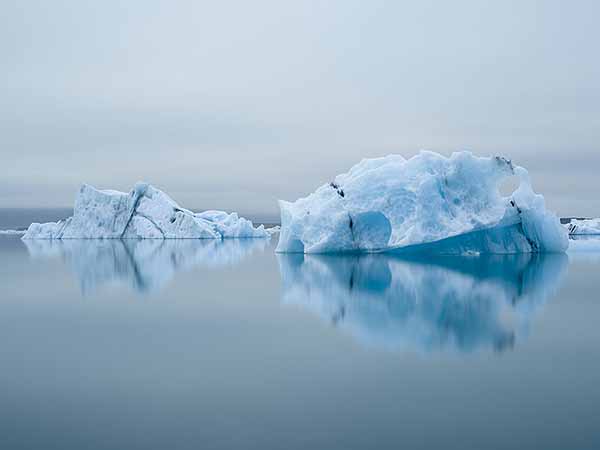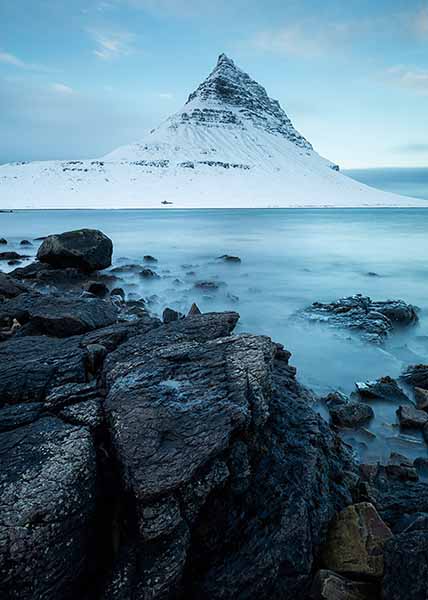Iceland In Winter
Group Leader – Robert Chaplin
Feb 03-12, 2018 (we scheduled over 2 weekends to miss less work)
10 Participants
Typical Workshop Schedule What Is Included Payment, Discounts, Cancellation, Refund Policies What to Bring
Return to Schedule of Offerings Return to Robert Chaplin’s Bio
Images courtesy of Daniel Bergmann.
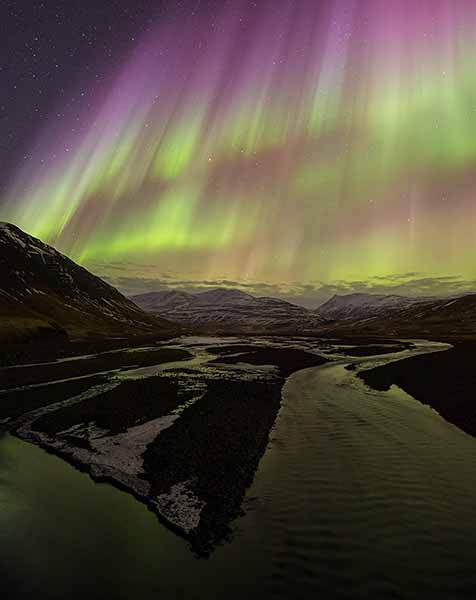
If you loved Iceland in summer, you’ll be amazed by the winter transitions! Iceland is the land of geysers and hot springs, glaciers and icebergs, occasional volcanoes, waterfalls, and in winter, some of the world’s best Northern Lights. Each stop offers new, exciting photo adventures. Winter also brings ice caves and specatular snow scapes.
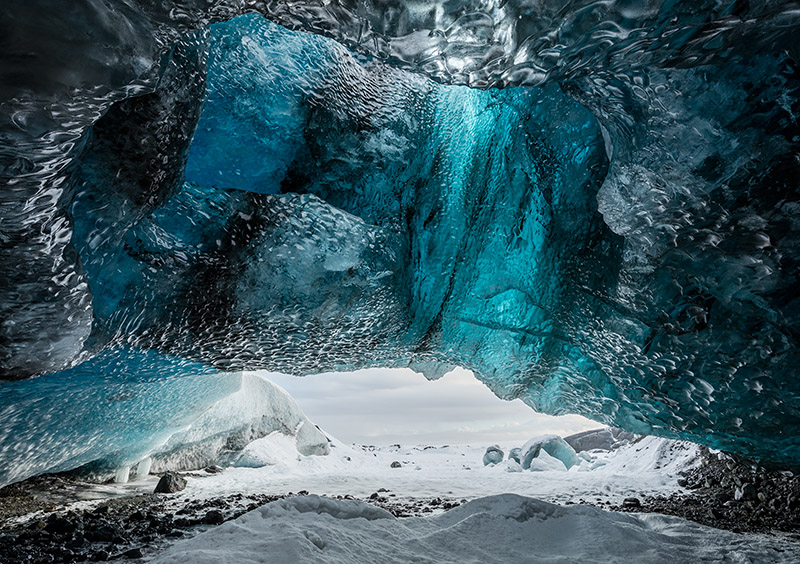
Iceland is an island located west of the European continent and sits at the meeting point of the North American and Eurasian continental plates. The plates are slowly moving apart, which means that the country is moving slowly, by just a few centimeters each year, growing wider. The rift runs diagonally from the southeast corner of the country to northwest and makes Iceland a hot bed of interesting, if not weird, geological activity. You can find geysers that shoot water into the sky, geothermal hot springs that provide electricity for the country and heat Iceland’s many public pools, and volcanoes that can erupt and form underground caves, black sand beaches, and even entire islands.

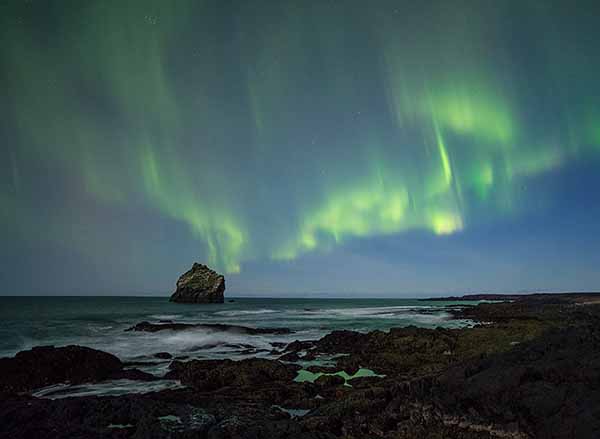
Our trip has been planned by our Iceland outfitter, photographer and guide Daniel Bergmann, to meet our specific guidelines. Daniel is a native Islander and has been leading photo trips to Iceland for 15 years and we believe he is the best available to lead us around this winter wonderland. We will photograph the best of both the Northern Lights and the unique winter scenery and landscapes of this marvelous country. We travel around Iceland in Daniel’s specially modified Mercedes Sprinter. This vehicle can go anywhere in winter, which is necessary to make the most of the photography opportunities. 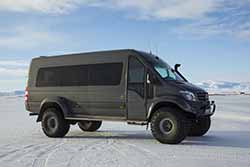
Tour highlights:
Jokulsarlon and the Ice beach
A good portion of the tour, or three days, will be in the Vatnajokull glacier region. Vatnajokull is the largest ice cap in Europe and covers about 9% of Iceland. One of its largest outlet glaciers, Breidarmerkurjokull, calves into the Jokulsarlon lagoon and large icebergs float around in the lagoon before becoming small enough to wash out to sea through the short river channel of Jokulsa. Some of the ice is temporarily deposited on the black sand beach by the incoming tide and this interplay of ice, waves, dark sand and light makes this location one of the most exciting photography playgrounds on Earth. And it is continually changing – the ice condition is different from one day to another.
Ice caves
One of the magic of winter by Vatnajokull glacier are the ice caves that become accessible as soon as the level of melt water goes down and it gets cold enough for the caves to become stable. As the glaciers are receding new ice caves are formed every winter, although usually in similar locations, so their shape and structure varies between years. We will be guided by an experienced guide to the best possible ice cave for photography where we can enjoy photographing the other worldly details of ice underneath the enormous ice cap.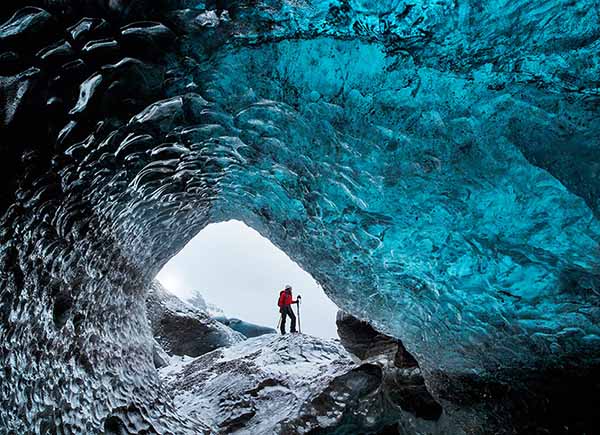
Snaefellsnes Peninsula
This photography paradise is just three hours north of Reykjavik but still enjoys less tourism in winter than the south coast. It is a wonderland of mountain ranges and coastal features. Some of the finest beaches for photography are to be found on the southern tip of the peninsula and the majestic and iconic Mt. Kirkjufell is located on the northern side.
Northern Lights photography
All of the locations we’ll be at for extended periods are very good for photographing the Northern Lights as such photography is as much about interesting foregrounds as it is about the lights themselves. And our modified 4×4 truck will allow us to get anywhere we wish to be for such photography. Where and when we try to photograph the lights will depend on their activity and weather, as clear skies or at least partly clear skies are needed for visibility. 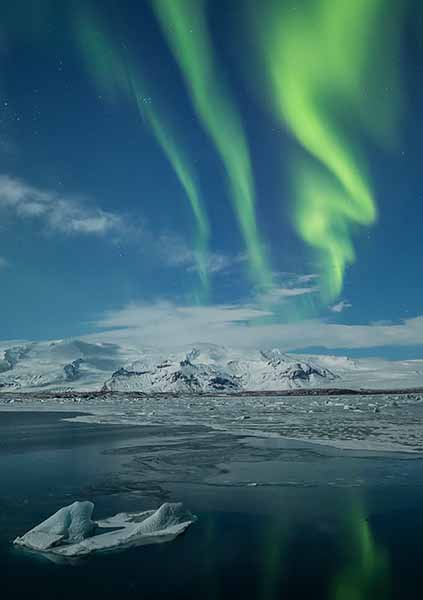
ITINERARY
The final itinerary is dependent on weather and other conditions and the guide will use his experience with local conditions to determine the best plan for each day, which might even change as a day progresses – all to maximize the photographic opportunities. In early February the sun rises at around 09:30 and sets at about 18:00. So the day is fairly short but the quality of light can be very good as the sun is low in the sky most of the day. There is also plenty of darkness for possible Northern Lights.
Day 1 – February 3
Arrival to Iceland and overnight at the KEA Skuggi hotel in downtown Reykjavik. The day is free to explore the city and acclimatize to winter in Iceland.
Day 2 – February 4
We leave Reykjavik after breakfast, at around 9 a.m. and head for the town of Vik at the south coast. We might photograph some of the waterfalls of the Eyjafjoll region on the way. Possibly one or both of the iconic Seljalandsfoss and Skogafoss and very likely a lesser known waterfall in a secluded location. If conditions are not good for waterfall photography this first day of our trip then we have another opportunity later, as we pass by again going west. Our main focus in the Vik area will be on the beaches on both sides of Mt. Reynisfjall. These black volcanic beaches feature incredible sea stacks and basalt rock features and we’ll also be spending time at the Dyrholaey headland.
Day 3 – February 5
We continue travelling east to the Vatnajokull region, where we’ll spend three nights at the Smyrlabjorg hotel. Once there we’ll be concentrating our efforts on the Jokulsarlon glacial lagoon and some of the smaller lagoons and glaciers in the area. We will make repeated visits to Jokulsarlon and the ice beach, giving us a number of opportunities to work with ice. Half a day will be dedicated to photographing an ice cave and we’ll also drive further east, to Stokksnes, where we’ll photograph the iconic Vestrahorn mountain range.
Days 4 and 5, February 6–7
Two additional days in the Vatnajokull area to make sure we reach all our goals and ambitions for ice photography. What exactly will be done on each day will be completely dependent on the weather and ice conditions.
Day 6 – February 8
We travel back west and overnight again in Vik. This gives us more opportunities for coastal photography and possibly Northern Lights above the sea stacks or the Myrdalsjokull glacier.
Day 7 – February 9
Now we start the journey out to Snaefellsnes peninsula. Two nights there are to ensure we get good light at Mt. Kirkjufell and by the coast near Budir, Arnarstapi and Hellnar.
Day 8 – February 10
An additional day at Snaefellsnes. We’ll be exploring both the southern and northern sides of the peninsula and may choose to revisit some of the prime locations if time and conditions allow.
Day 9 – February 11
On our way out to the Reykjanes peninsula, where we’ll spend our last night, we might do a detour to the Hraunfossar waterfalls or choose to spend our last afternoon out at the Reykjanes point itself, where a number of rock stacks make a great photography subject. After dinner we may venture back out to the stacks for the last night of Northern Lights, if conditions are good.
Day 10 – February 12
You can leave Iceland at any time, even on the very early morning flights.
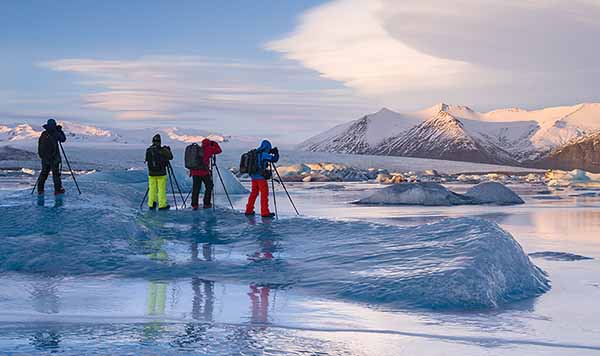
Costs
$5800 for shared accommodations. Single supplement is an additional $750. We will do our best to find you a roommate if that is your choice. What is included is is all meals (B,L, & D except B&L only the last day, and no meals on Day 1), transportation, lodging, and guide fees. Flight to Iceland, snacks, & alcoholic beverages are not included.
Iceland prices are going up. The value of Iceland currency is up approximately 20% against the US dollar in the last year. Iceland is also raising its VAT (Value Added Tax) for tourism from 11% to 24% in the near future.
A $750 deposit is required at registration to hold your spot. Due to room requirements, the balance will be due on November 15, 2017. Final payment will be by check or additional credit card fees will apply. Cancellations after November 15, 2017 will result in loss of fees unless we can replace you. Trip insurance is highly recommended.
Passports are required for Iceland trips, but no visa for US citizens.
The airport is Keflavik outside Reykjavik.
Hiking for the trip will be short and individuals can walk around as their ability allows. There will be some slippery winter conditions in many locations.
Pricing is based on a minimum of 6 participants for the trip. If less register, you will be giving the option of going at a higher price or receiving a total refund. Interest in this trip seems to be great and we recommend early registration.
